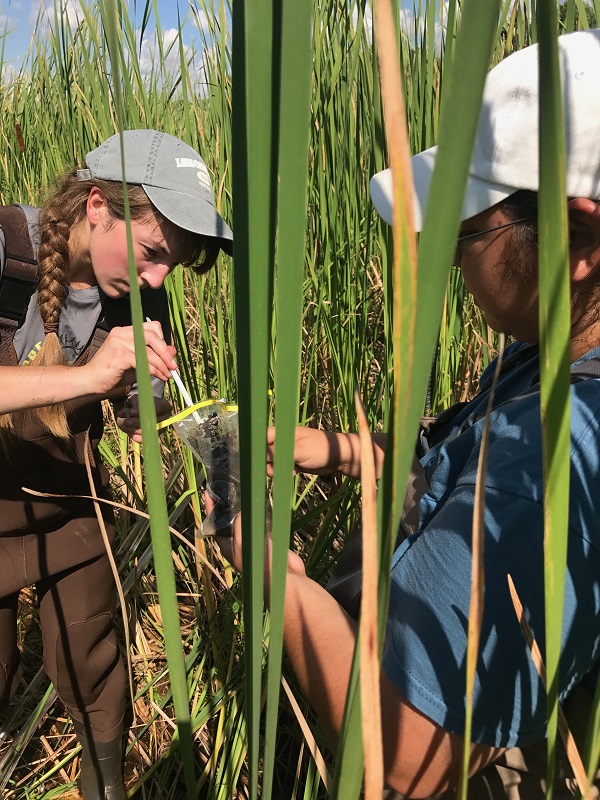Clarkson University graduate student Evie Brahmstedt recently gave a plenary presentation on her research on mercury cycling in St. Lawrence River wetlands at Save the River’s Annual Winter Environmental Conference in Clayton, New York on February 2nd. According to Brahmstedt, a doctoral student in the Environmental Sciences and Engineering program at Clarkson’s Institute for a Sustainable Environment, “The Save the River conference is a great opportunity to engage with passionate individuals from the community, academia, and government all at one gathering. Their interest and affection for the environment re-instills my passion for, as well as the importance of, my own work and the work of others, which is extremely gratifying.” In Brahmstedt’s talk “Will Plan 2014 Create a Risk for Mercury Contamination?” she described how her research is of importance to the health of the Upper St. Lawrence River ecosystem. “As a potent neurotoxin that impacts both humans and wildlife, it is important to not only gauge the presence of mercury in the ecosystem, but also consider factors, such as Plan 2014, that may increase its mobilization into the food chain.”

Plan 2014 is a regulation plan for determining the flows through the Moses-Sanders Dam located on the St. Lawrence River between Cornwall, Ontario, and Massena, New York. The updated plan replaces an outdated system of regulating flows developed in the 1950s.
A scientific article entitled “Assessment of mercury mobilization potential in Upper St. Lawrence River riparian wetlands under new water level management regulation” describing this research has been accepted for publication in the Journal of Great Lakes Research. The article is co-authored with Clarkson University professor of Civil and Environmental engineering Thomas Holsen, graduate student Hao Zhou, assistant professor Erin Eggleston of Middlebury College, and Michael Twiss, professor biology at Clarkson University and project leader. Twiss states, “This research provides useful information to help understand how changing the riverside wetland environment may mobilize a contaminant that has been deposited in these wetlands in the past. Plan 2014 is designed to enhance fish spawning habitat but we need to know that if there will be more fish we also need to know if they may be more mercury-contaminated so we can manage the potential impact.”
Click here for a shareable link: https://www.clarkson.edu/news/clarkson-university-study-warns-potential-plan-2014-increase-mercury-risk-saint-lawrence-river